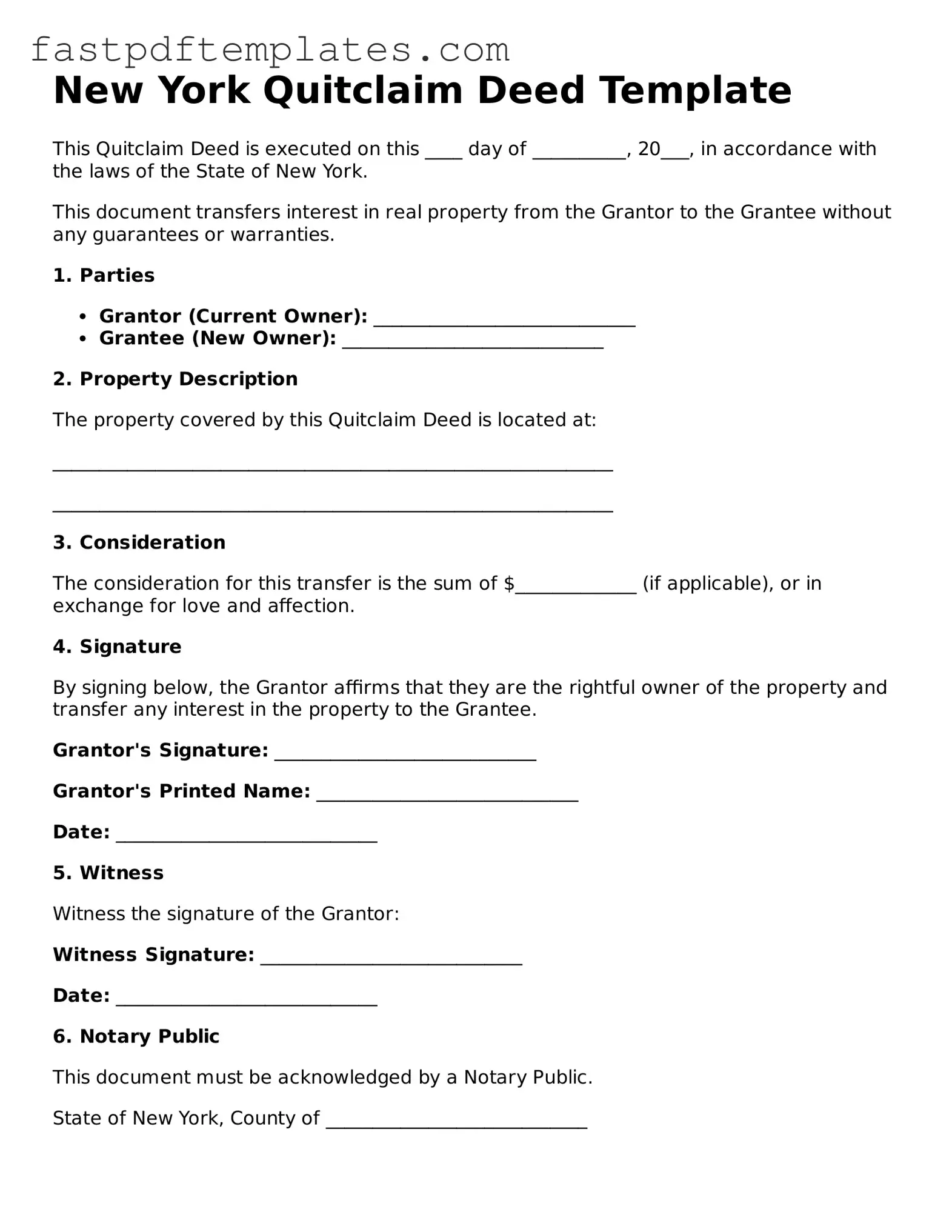New York Quitclaim Deed Template
This Quitclaim Deed is executed on this ____ day of __________, 20___, in accordance with the laws of the State of New York.
This document transfers interest in real property from the Grantor to the Grantee without any guarantees or warranties.
1. Parties
- Grantor (Current Owner): ____________________________
- Grantee (New Owner): ____________________________
2. Property Description
The property covered by this Quitclaim Deed is located at:
____________________________________________________________
____________________________________________________________
3. Consideration
The consideration for this transfer is the sum of $_____________ (if applicable), or in exchange for love and affection.
4. Signature
By signing below, the Grantor affirms that they are the rightful owner of the property and transfer any interest in the property to the Grantee.
Grantor's Signature: ____________________________
Grantor's Printed Name: ____________________________
Date: ____________________________
5. Witness
Witness the signature of the Grantor:
Witness Signature: ____________________________
Date: ____________________________
6. Notary Public
This document must be acknowledged by a Notary Public.
State of New York, County of ____________________________
On this ____ day of __________, 20___, before me, a Notary Public, personally appeared ____________________________, to me known to be the individual described in and who executed the foregoing instrument and acknowledged that he/she executed the same.
Notary Public Signature: ____________________________
My Commission Expires: ____________________________
